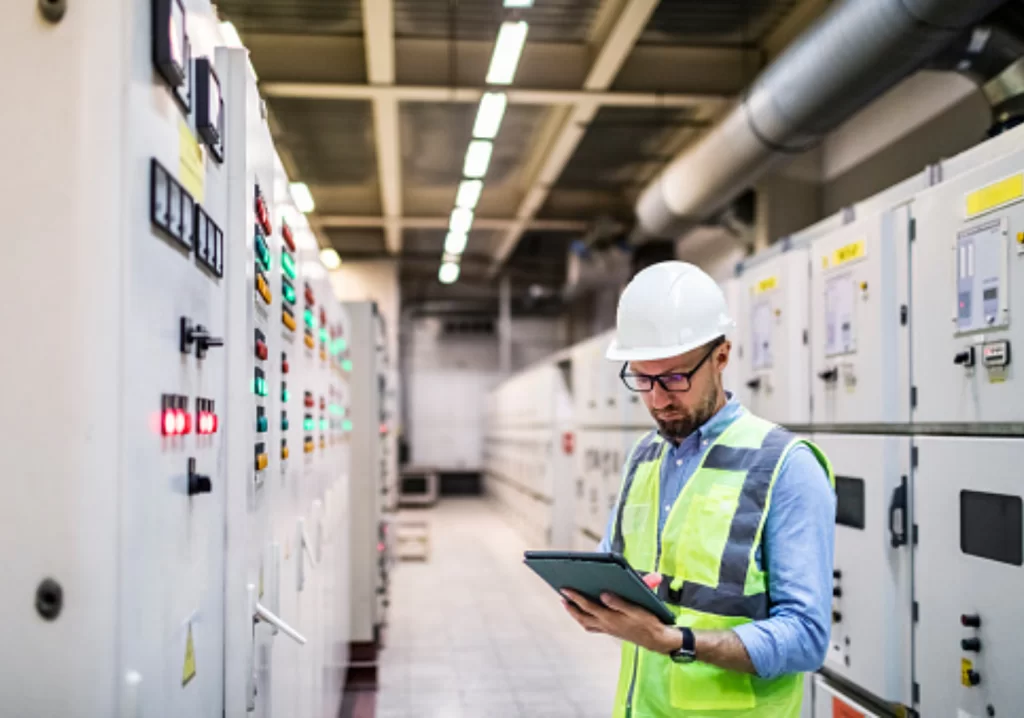Engineers seeking to reduce the environmental footprint of commercial buildings should be investigating smart solutions such as e-mobility, critical power, and electrical distribution and energy management systems.
That is a finding of recent research conducted by ABB, which shows that Australian businesses are being held back from achieving their sustainability goals due to fears of high up-front costs.
Exploring the challenges confronting commercial buildings and the construction sector, the research also recommends integrated solutions that can transform buildings into smart and efficient spaces.
“Australia is lagging at the moment on the world stage, so there are clearly still some barriers holding businesses back,” Milad Mostowfivala, Senior Product Manager at ABB Australia, told create. “One of these barriers is the unknown return on investment that companies can anticipate in achieving their energy efficiency targets.”
Mostowfivala says companies leading the way on smart building sustainability are using technology to measure, monitor and optimise their operations. These technologies help bring environmental goals within reach, as well as increase efficiency by reducing operational expenses.
ABB has also developed a tool that engineers can use to calculate return on investment of these technologies.
Solutions at hand
Many engineers are not familiar with the full suite of solutions available for increasing energy efficiency, Mostowfivala said.
“Engineers are tasked with developing designs and systems, but they don’t always know what they can use to ensure that they have capabilities around sustainability.
“Our ultimate goal is for engineers to comprehend and provide a sustainable outcome to all their end clients.”
Bringing together these innovative, integrated solutions allows engineers to transform buildings into smart and efficient spaces. Mostowfivala identified seven approaches to energy efficiency that reduce costs while promoting a project’s sustainability:
- Measuring and benchmarking energy consumption for energy efficiency
- Selecting the right-sized electrical asset equipment
- Bringing connectivity to physical asset switchgear
- Installing efficient electrical equipment
- Electrifying where possible
- Deploying smart, real-time energy management and asset management
- Collecting energy-related data and optimising systems using this information
Expanding e-mobility, in the form of charging facilities for electric vehicles, is one example of smart technology that can transform a building’s environmental impact.
“It can be energy management, but it can also be the electrical distribution system connecting to the charger.”
And e-mobility is an arena in which Mostowfivala has noticed immense – and “exponentially growing” – interest, as well as challenges.
Building data
When measuring and benchmarking energy consumption, facilitating efficient use of energy in a building is a significant factor.
Electrical circuit monitoring and load monitoring, is one example, Mostowfivala said.
“These are individual elements of a greater picture that form the electrical backbone infrastructure of a building. The potential to connect to these physical assets and collect energy-related data can establish where optimisation is feasible,” he said.
“This shows how energy loads are behaving across an entire commercial building, and with that you’re able to determine the location where improvements can occur, as well as the locations where energy consumption improvement was successfully optimised.”
ABB’s building portfolio, Mostowfivala said, can also offer sustainability gains by automating services.
“We have solutions such as ABB Cylon and i-bus KNX that provide advanced building automation in terms of heating, ventilation, air conditioning [and] lighting.
“It can control these systems efficiently while also controlling their energy usage, then optimise usage based on occupancy, time of day or environmental conditions such as temperature. That would translate into having a reduced energy consumption and lower operational costs.”
These measures, Mostowfivala said, have produced real improvements for commercial buildings in terms of energy efficiency and sustainability.
“We have been able to provide the charging infrastructure plus energy management plus electrical distribution solutions for end users.
“These include instances where Cylon and KNX Standard were used for hospitals and office buildings, such as Sydney’s ANZ tower.”
Regulations have evolved over the past three years to further emphasise energy efficiency, particularly within the building space.
“Updates to Section J of the National Construction Code mean more detailed attention to a building’s energy efficiency is required, helping to reduce Australia’s carbon footprint.”
As such, the increased efficiency and reliability gained from incorporating electrical solutions into sustainable building design plays a vital role in Australia’s energy transition.
The building’s KNX detectors constantly monitor the ambient daylight levels across the floor and automatically adjust lighting levels in response. To ensure the safety and security of occupants working late while still using a minimum level of energy, the system provides a highly flexible lighting control solution and integrates numerous user-interface points.
Meanwhile, at South Australia’s Calvary Adelaide Hospital, ABB’s automation systems control lighting across the institution, and are integrated with the building management and nurse call systems, saving energy and simplifying operation.
The lighting and climate control systems work together; when lighting sensors detect the movement of people, they also activate the heating and cooling system. As a whole, the system reduces operational costs while ensuring patients remain comfortable.
Real-time management
According to Mostowfivala, digitalisation can help end users understand real-time energy consumption, as well as make decisions in real time to reduce their operational cost.
“We have a platform that has been in the market for the past six years: ABB Ability Energy Manager,” he said. “With the help of this system, we’ve been able to provide solutions to end users to be able to determine their real-time monitoring and … energy management.
“One of the key factors around ABB Ability Energy Manager is its ISO-50001 certification capability, a standard designed to improve energy efficiency. Customers who comply with this are able to prove to government entities, to their own clients, to their own stakeholders, and to their own shareholders that they are running an efficient and sustainable operation.”
The other advantage is its multi-site capability, Mostowfivala said.
“If customers have multiple facilities across a variety of geographical locations, they’re able to have a holistic view over many sites – no matter where they are – in one single platform.”
Find out how to increase your company’s efficiency and reduce operational expenses, all while promoting sustainability, by downloading ABB’s Building the future: innovations for smart buildings ebook.

